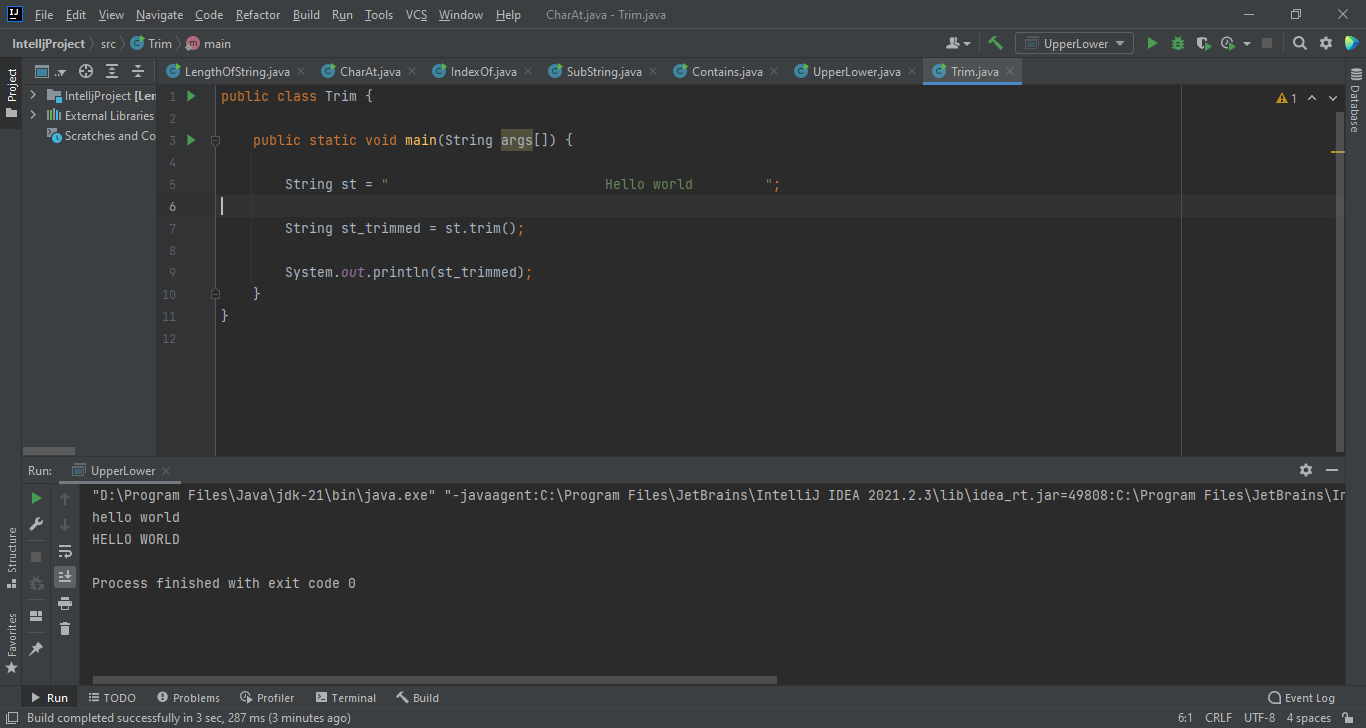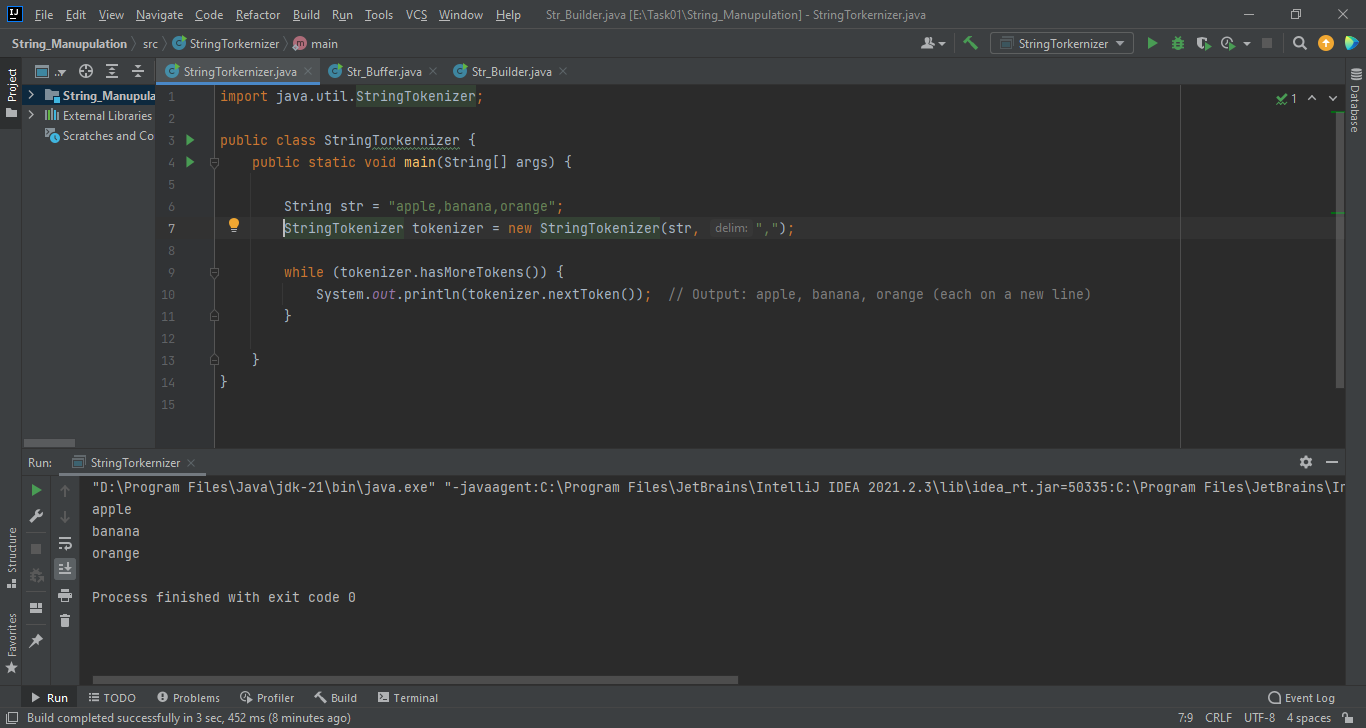Mastering String Manipulation in Java
String Handling Done Right
Techniques and Best Practices for Developers
String
manipulation in Java is a crucial skill for developers working with textual
data. Java provides robust built-in functionalities and libraries that empower
developers to perform various operations efficiently. In this blog post, we
will explore essential string manipulation techniques, common pitfalls to
avoid, and best practices to write clean and effective code. String
manipulation forms the backbone of many Java applications, from basic
input/output operations to complex data processing tasks. By mastering the
techniques and best practices outlined in this guide, you can write efficient,
maintainable code that effectively handles textual data. Whether you're a
beginner or an experienced developer, understanding how to leverage Java’s
string manipulation capabilities will undoubtedly enhance your programming
skills and productivity.
Understanding
Strings in Java
In Java,
strings are objects of the String
class, which represents sequences of characters.
String Declaration : Strings can be declared and
initialized using double quotes ( "
) or by creating new instances of the String
class.
String str1 = "Hello";
String str2 = new
String("World");
Immutability: Strings in Java are immutable, meaning once
created,their values cannot be changed. Operations on strings, such as
concatenation, actually produce new string objects.
String Pool : Java maintains a string pool for
literal strings, which optimizes memory usage by reusing strings with the same
value.
Basic
String Operations
1.Concatenation : Combining strings together.
String
str1 = "Hello";
String str2 = "World";
String result = str1 + " " + str2;
// Result: "Hello World"
2.Substring: Extracting a part of a string.
public class SubString {
public static void main(String args[]) {
String st = "Hello world";
String subst = st.substring(7,9 );
System.out.println(subst);
}
}
3. Length: Finding the length of a string.
public class LengthOfString {
public
static void main(String args[]){
String st = "Hello";
int l
= st.length();
System.out.println("Length is "+l);
}
}
4.charAt: Retrieves the character at a specified index in a string.
public class CharAt {
public static void main(String args[]){
String st = "Hello";
char ch = st.charAt(3);
System.out.println("Character at 3rd position is "+ch);
}
}
5.IndexOf:
Returns the index of the first occurrence of a specified substring within a
string.
public class IndexOf {
public static void main(String args[]){
String st = "Hello";
int ind = st.indexOf('l');
System.out.println("Index of l is "+ind);
String X = "Welcome to Java Class";
int indx = X.lastIndexOf('a');
System.out.println("Index of last a is "+indx);
}
}
6.Contains: Checks
if a string contains a specified substring and returns a boolean.
public class Contains {
public static void main(String args[]) {
String st = "Welcome to class";
if(st.contains ("class")) {
System.out.println("Welcome to Java class");
}
else{
System.out.println("Welcome to Academy");
}
}
7.ToUpper &
ToLower: Convert a string to uppercase or lowercase, respectively.
public class UpperLower {
public static void main(String args[]) {
String st = "HELLO WORLD";
String st_lower = st.toLowerCase();
System.out.println(st_lower);
String CP = "hello world";
String CP_upper = CP.toUpperCase();
System.out.println(CP_upper);
}
}
08.Trim: Removes
leading and trailing whitespace characters from a string.
public class Trim {
public static void main(String args[]) {
String st = " Hello world ";
String st_trimmed = st.trim();
System.out.println(st_trimmed);
}
}
Advanced Techniques
1. String Comparison: Comparing strings using ‘equals()’
and ‘equalsIgnoreCase()’ methods.
String s1 = "hello";
String s2 = "HELLO";
boolean isEqual = s1.equals(s2); // false
boolean isEqualIgnoreCase =
s1.equalsIgnoreCase(s2); // true
2. Searching and Replacing: Finding occurrences of substrings and
replacing them.
String s = "Hello World";
String newStr = s.replace("World",
"Universe"); // Result:
"Hello Universe"
3. Splitting and Joining: Splitting a string into an array of
substrings and vice versa.
String s = "apple,banana,orange";
String[] fruits = s.split(",");
// fruits: {"apple",
"banana", "orange"}
String joinedStr =
String.join("-", fruits);
// joinedStr:
"apple-banana-orange"
Best
Practices
Ø
StringBuffer
StringBuffer
is a class in Java that provides mutable (modifiable) sequences of characters.
It was designed to address the inefficiencies of string concatenation
operations using the + operator,
especially in scenarios where strings are frequently modified.
Here are the key characteristics and usage
points:👇
· 👉Mutable and Synchronized: StringBuffer is mutable, meaning you
can modify (append, insert, delete) its contents without creating a new object
each time. Additionally, StringBuffer is synchronized, which means it is
thread-safe, making it suitable for concurrent operations in multithreaded
environments.
·👉Performance Consideration: Due to its synchronized nature, `StringBuffer` operations can be slower compared to `StringBuilder` (discussed next), especially in single-threaded scenarios. Therefore, unless thread safety is explicitly required, `StringBuilder` is generally preferred for better performance.
Ø
StringBuilder
StringBuilder is another class in Java that provides mutable sequences
of characters, similar to StringBuffer .
It was introduced in Java 5 to provide a non-synchronized version of StringBuffer,
optimized for single-threaded environments where thread safety is not a
concern.
Here are its key characteristics:👇
· 👉 Mutable and Non-Synchronized: StringBuilder is mutable like StringBuffer, allowing efficient modifications to its content. However, unlike StringBuffer, it is not synchronized, making it faster in single-threaded scenarios where thread safety is not required.
· 👉 Better Performance: Due to its non-synchronized nature, StringBuilder generally performs better
than StringBuffer for most use cases
where thread safety is not a concern.
Ø
StringTokenizer
StringTokenizer is a class in Java that allows splitting a string into
tokens (substrings) based on delimiters (characters). It is somewhat simpler
compared to using regular expressions for the same purpose and is useful for
basic tokenization tasks.
Here’s how it works:👇
· 👉Tokenization: StringTokenizer
breaks a string into tokens using specified delimiters (spaces by default).
Tokens are returned one by one using methods like nextToken() until all tokens are retrieved.
· 👉 No Regular Expressions: Unlike String.split() which uses regular expressions, StringTokenizer operates based on literal characters, making it straightforward for simple tokenization tasks.
Key Differences and When to Use Each
👉StringBuffer vs StringBuilder
o Use StringBuffer when thread
safety is necessary (e.g., in multi-threaded environments).
o Use StringBuilder when thread safety is not a concern (e.g., in single-threaded or performance-critical applications).
👉StringTokenizer vs String.split():
o Prefer String.split() when you
need to use regular expressions or want more flexibility.
o Use StringTokenizer for simple tokenization tasks where delimiters are fixed and straightforward.
understanding these classes and their distinctions allows Java
developers to choose the appropriate tool for manipulating strings efficiently
based on their specific requirements, whether it’s for mutability, thread
safety, or simple tokenization. These classes are essential components in the
Java programmer's toolkit for effective string handling.
ü
Use StringBuilder for Mutable
Operations: When performing
frequent modifications on strings (e.g., within loops), use StringBuilder for
better performance due to its mutable nature.
ü
Avoid String Concatenation in Loops: Concatenating
strings in a loop can lead to performance issues. Instead, use StringBuilder or
StringJoiner.
ü
Handle Null Strings: Always
check for null strings before performing operations to avoid
NullPointerException.
ü
Use String Methods Judiciously: Java’s String class provides many
useful methods like indexOf(), startsWith(), endsWith(),
etc.
Practical Applications
👉Data Parsing and Validation: Processing input data, validating formats (e.g., dates, email addresses).
👉Text Manipulation: Generating formatted output, parsing log files, manipulating JSON strings, etc.
👉Algorithm Implementation: Implementing algorithms involving string manipulation, such as pattern matching, substring searching, etc.














Comments
Post a Comment